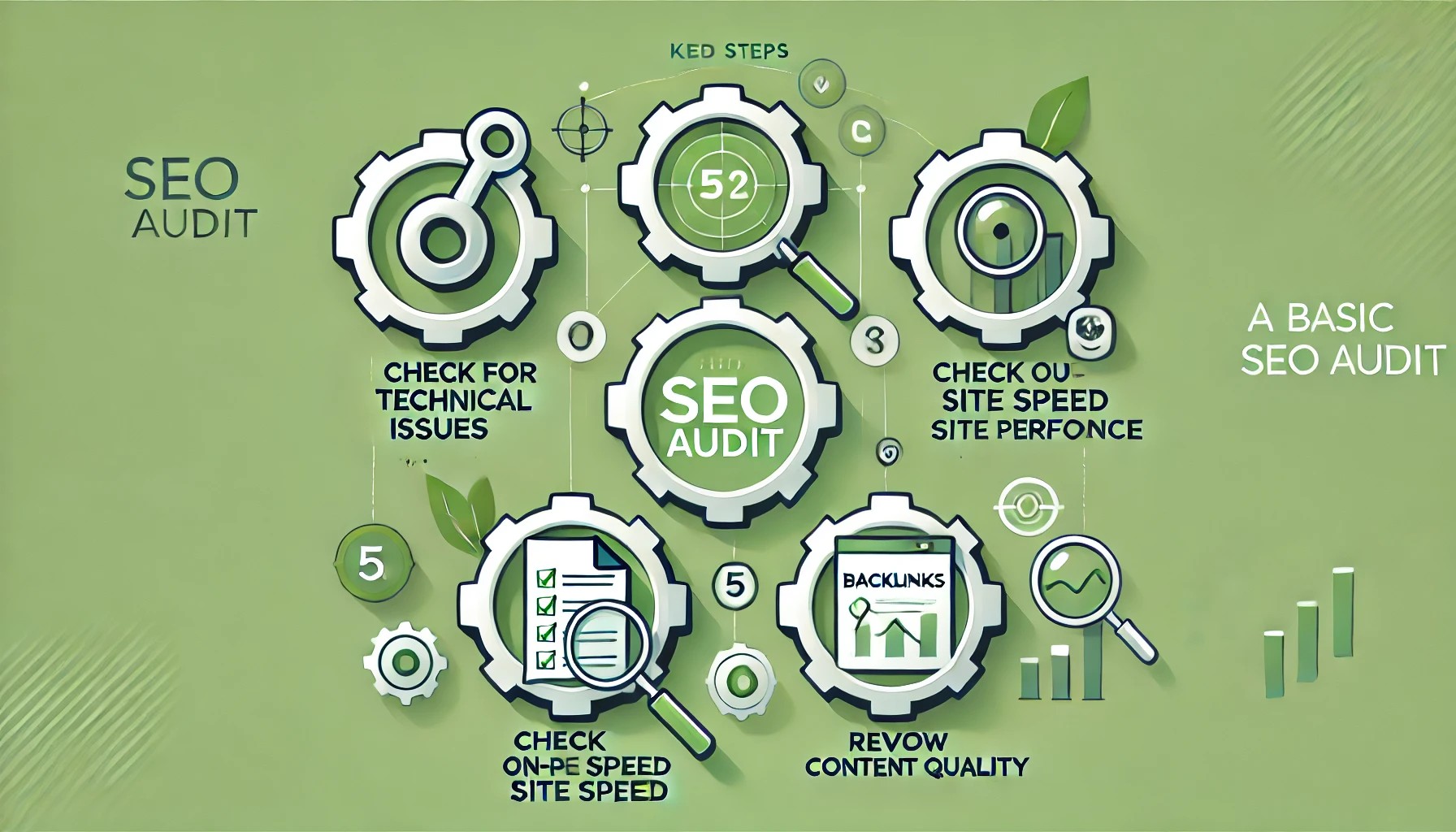How to Perform a Basic SEO Audit for Your Website
Introduction
Performing a basic SEO audit is essential to ensure your website ranks well on search engines. It helps you identify technical issues, optimize content, and improve user experience. In this guide, you’ll learn simple steps to conduct an audit that can boost your website’s visibility and performance.
An audit is like a health check for your website. It reveals technical issues, on-page SEO problems, and areas where your content could be optimized to rank higher in search results. The good news? You don’t need to be an expert to perform a simple audit. For more insights, check out Google’s SEO Starter Guide
In this guide, we’ll walk you through 5 key steps to perform a basic SEO audit for your website. Let’s get started!
1. What Is an SEO Audit?
An audit is essential to ensure your website ranks well on search engines. It helps you identify technical issues, optimize content, and improve user experience. In this guide, you’ll learn simple steps to conduct an SEO audit that can boost your website’s visibility and performance.
It is a process of evaluating your website’s health in terms of search engine optimization. It helps identify issues that might be affecting your rankings, such as broken links, slow page speed, poor content optimization, and technical errors.
Key areas of an audit include:
-
-
-
- Technical SEO
- On-page SEO
- Off-page SEO
- User experience
-
-
Think of it as routine maintenance to keep your website running smoothly—just like you would for a car.
2. Why a Basic SEO Audit Is Important
Conducting an audit regularly helps you:
-
-
-
- Improve search engine rankings
- Enhance website speed and performance
- Optimize content for better engagement
- Identify and fix technical issues
-
-
3. How to Perform a Basic SEO Audit (Step-by-Step)
Step 1: Check for Technical Issues
-
-
-
- Use tools like Google Search Console to identify crawl errors.
- Check if your website is mobile-friendly.
-
-
Step 2: Analyze On-Page SEO
-
-
-
- Ensure proper use of headings (H1, H2, H3).
- Use your focus keyphrase naturally in titles, headings, and content.
- Optimize meta descriptions and title tags.
-
-
Step 3: Check Site Speed and Performance
-
-
-
- Use Google PageSpeed Insights to analyze loading times.
- Optimize images and minimize CSS/JavaScript files.
-
-
Step 4: Evaluate Backlinks
Step 5: Review Content Quality
-
-
-
- Ensure content is original, engaging, and relevant.
- Add outbound links to credible sources (like the ones above).
-
-
4. Tools to Help with Your SEO Audit
-
-
-
- Google Analytics
- Google Search Console
- Yoast SEO (great for WordPress users)
- Ahrefs and SEMrush
-
-
5. Common Mistakes to Avoid
-
-
-
- Keyword stuffing
- Ignoring meta descriptions
- Lack of mobile optimization
- Not using alt text for images
-
-
Conclusion
Performing an audit doesn’t have to be complicated. By following the steps above, you can improve your website’s visibility, attract more traffic, and enhance user experience. Regular audits help you stay ahead of search engine updates and keep your site performing at its best.
Feeling overwhelmed?
Don’t worry—GrafikOptions is here to help. We specialize in SEO audits and website optimization to boost your rankings and grow your business.
Contact us today for a free consultation and let’s take your website to the next level!
